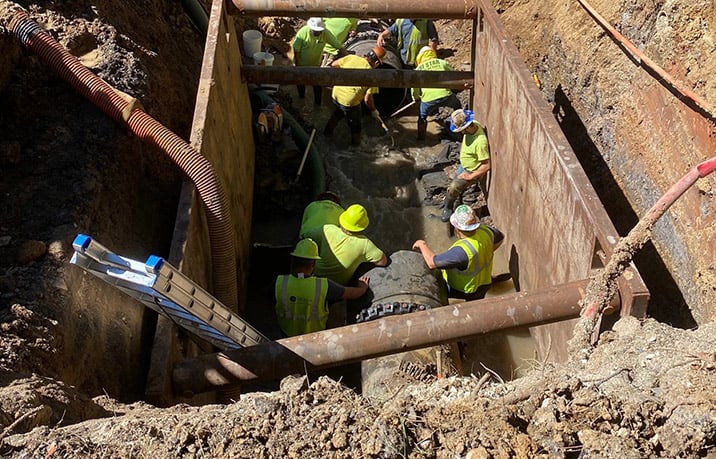 A crew with the city’s Water and Sewer Services department works to repair a 36-inch water main line that broke near Pine Avenue in September 2021. (City of Fayetteville)
A crew with the city’s Water and Sewer Services department works to repair a 36-inch water main line that broke near Pine Avenue in September 2021. (City of Fayetteville)Water and sewer customers in Fayetteville won’t see much of an increase on their utility bills next year, but rates will eventually rise as normal.
The rates typically increase by about 3% each year, and while bills in 2024 will stay about the same as 2023, a 6% water increase will come in 2025 under a new plan adopted by the City Council last week.
The council voted 7-0 to approve the proposal as recommended by a study from the Black & Veatch consultant firm. The plan includes two years of stabilized rates from 2025 to 2027 when a new study is expected.
The plan was first discussed last July and was tabled seven times over the following 14 months while city staff met with leadership in several surrounding cities where Fayetteville either maintains full services (Farmington, Goshen, Greenland and parts of Johnson) or sells water at wholesale (Elkins and West Fork). Fayetteville also treats sewage from Elkins.
Under the initial proposal, rates in Elkins would’ve increased by 18% and West Fork’s would’ve risen by 20%. During discussions, however, the consultants discovered a miscalculation in their estimates, which lowered the increase in West Fork from 20% to 11.8%. The change for Elkins customers was also reevaluated and increased to 21%.
West Fork Mayor Heith Caudle spoke against the proposal at several of the council meetings and said while he appreciated his city’s increase being lowered after the discrepancy was found, he still wasn’t happy with the changes.
The other group affected by the rate changes are the city’s eight industrial customers which average nearly 20 million gallons of water usage per month. Those customers will see an increase of about 16% under the new plan.
Fayetteville buys water from Beaver Water District, which provides drinking water to most of the cities across the region.

